Fitting
Adjusting Vertical Length for Bodice
Hello my lovely sewist friends. Today I have written a blog post for you all on how you can alter your bodice block for vertical length. Here we have used the Beth Dress.
You will also learn how to recognize it on your body if you are not familiar with it.
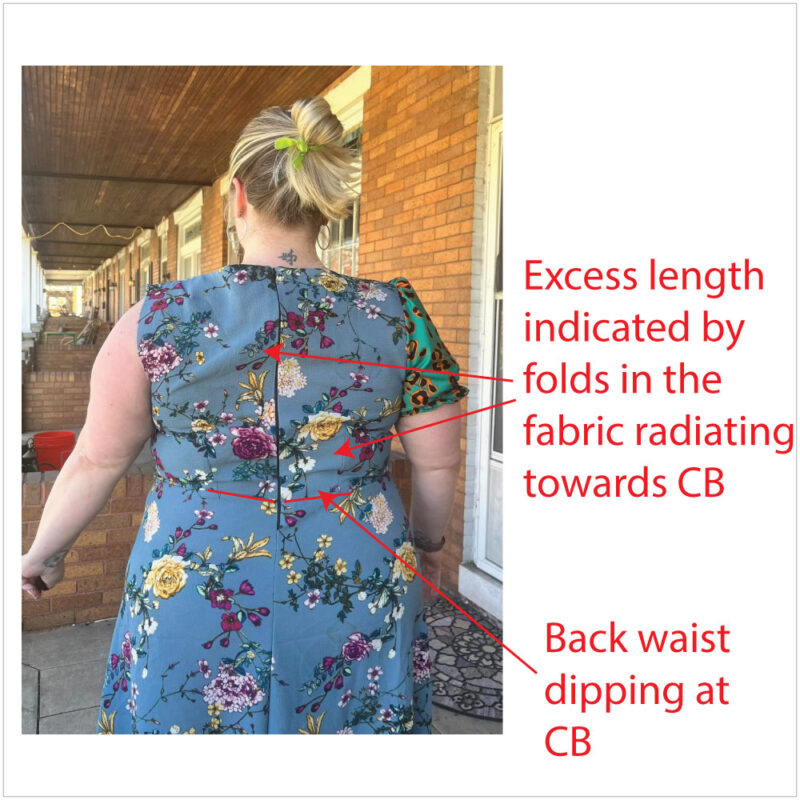
Our Julia McC recently road tested our new Beth Dress and had to complete some minor pattern adjustments for her fit of her bodice.
Her fit adjustments can be seen in these series of 3 photos.
The above image shows that there is too much CB length in her back bodice of her Beth Dress toile.
This can be rectified by reducing the greatest amount of excess at CB length back to nothing at the side seam.
If there is extra length at the side seam that can also be folded out along with her corresponding waistband.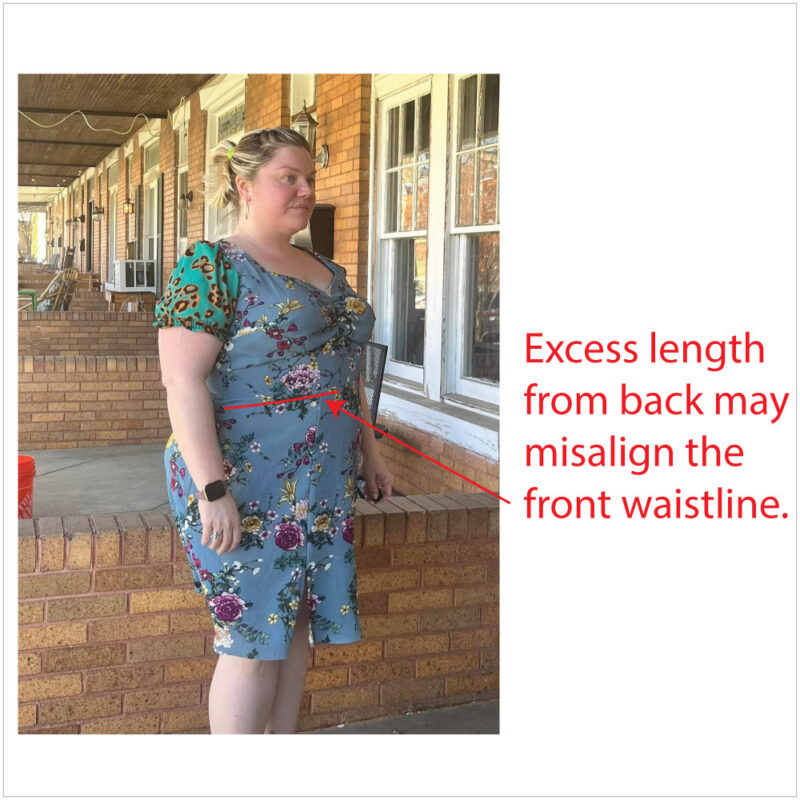
The next photo (above) shows how the waistline is pulling up or tilting up when it gets to her true CF.
This can either be rectified by reducing the vertical length of the CB (as above), and/or reducing length in the side seam – plus also adding in vertical length into the CF of the waistband to get the front waistline to be level.
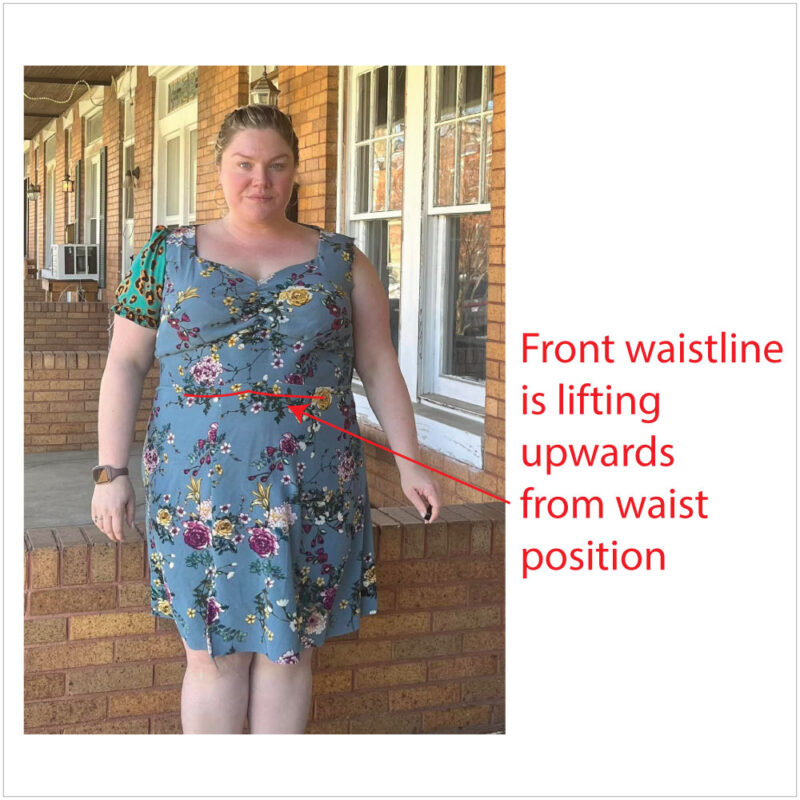
The tilt/lifting of the front waistline is quite obvious when looking at the garment from the front.
More vertical height will be added into the depth of the front waistband to move the waistline down where it should sit on true waistline.
METHOD.
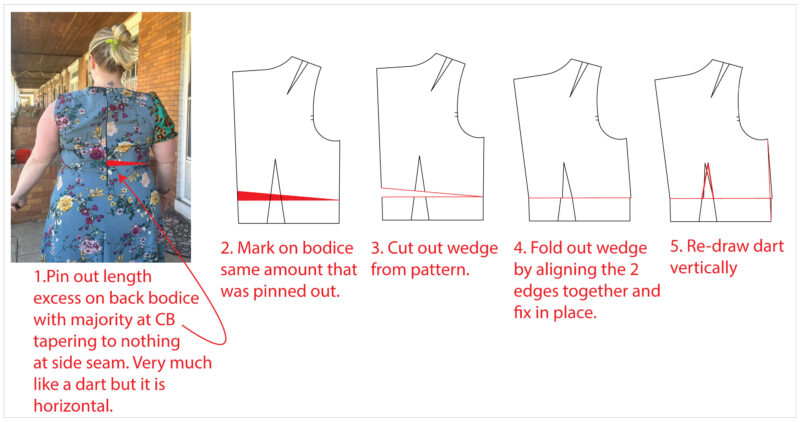
REDUCING THE VERTICAL CENTRE BACK LENGTH.
Step 1. Pin out the excess in the back of the bodice toile. It is very similar to a dart except this folded dart will be horizontal. The greatest amount will be at the CB zipper edge and taper back to nothing on the side seams.
Step 2. Transfer the total depth of the folded wedge/dart and trace it onto your pattern piece. Cut out this excess from the pattern piece.
Step 3. Fold out the wedge/dart by aligning the 2 cut edges together and fix with tape to hold. The CB edge will tilt but that is what you want., You are reducing the excess vertically.
Step 4. Re-draw the top section of the waist dart using the bottom section of the dart as a guide.
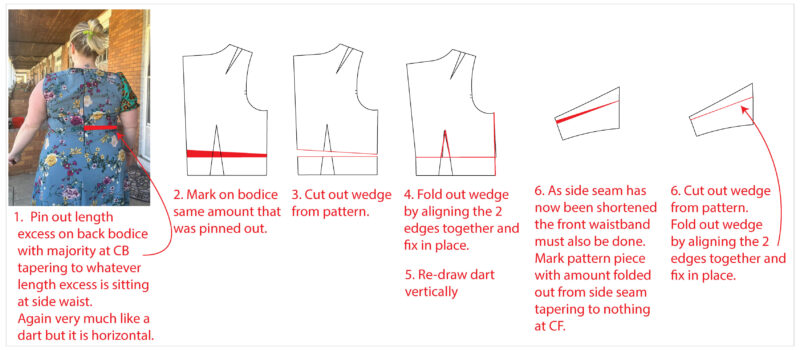
REDUCING THE VERTICAL CENTRE BACK LENGTH and SIDE SEAM LENGTH EXCESS.
Very similar steps to the above method except we will be folding out any small length excess that may be sitting in the side seams.
Step 1. Pin out the excess in the back of the bodice toile. It is very similar to a dart except this folded dart will be horizontal. The greatest amount will be at the CB zipper edge and taper back to the small excess sitting on the side seams.
Step 2. Transfer the total depth of the folded wedge/dart and trace it onto your pattern piece. You will find that you will have the greatest amount sitting at the CB edge and then a smaller amount on the side seam. Cut out this excess from the pattern piece.
Step 3. Fold out the wedge/dart by aligning the 2 cut edges together and fix with tape to hold. The CB edge will tilt but that is what you want. You are reducing the excess vertically.
Step 4. Re-draw the top section of the waist dart using the bottom section as a guide.
Step 5. Draw a line on the waistband. Mark the total excess amount on the side seam – refer to amount taken from back bodice side seam – of the pattern piece going back to nothing at the CF. Again, it is a horizontal wedge/dart that will be folded out.
Step 6. Cut out this excess from the pattern piece.
Step 7. Fold out the wedge/dart by aligning the 2 cut edges together and fix with tape to hold. Redraw the CF if needed so it can be “cut on the fold” as detailed.
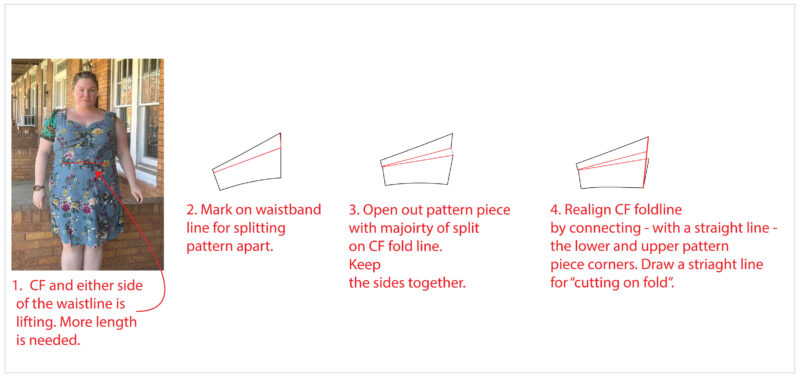
RE- ALIGNING THE FRONT WAISTLINE.
Re-aligning the front waistline is necessary when the front of the garment lifts. This is common in postures that are very erect – the Beth Dress has cup specific pattern sizes so the lift of Julias toile is a result of very erect front posture.
Step 1. Mark on front waistband pattern a line to allow for the pattern to be split apart. Cut through its entirety.
Step 2. Open up the pattern piece with the greatest amount needed at CF ensuring the side seams are still together. The amount that you will open is dependent on how much the CF of the garment lifts. Put some scrap paper behind the open pattern piece and stick to hold.
Step 3. Re-draw a vertical CF. Connect both the top and the bottom CF points of the pattern piece. Any excess pattern – it will be very negligible – can be cut off. This edge is now the “cut of fold” for the front waistband.
And that’s it my lovely friends.
Getting your garments to fit correctly is not that hard and the small amount of time taken for fit adjustments is a great investment in fabulous looking garments.
I hope that you add this to your knowledge bank of fitting know-how.
Love to you all.
Ann at Designer Stitch.
